Abstract
Radicals in the gas phase of both mainstream and sidestream cigarette smoke have been studied using electron-spin resonance ESR spin-trapping techniques with alpha-phenyl-N-tert-butyl nitrone (PBN) as the spin trap. The principal radicals we trap appear to be alkoxyl radicals. Mainstream and sidestream gas-phase smoke each have about the same concentration of radicals, about 1 X 10(16) radicals per cigarette (or 5 X 10(14) per puff). These radicals are reactive, yet they appear to be remarkably long-lived: they are still spin trapped from gas-phase smoke after more than 5 min. We propose that a steady-state concentration of reactive radicals exists in gas phase cigarette smoke. We suggest that this steady state is produced by the slow oxidation of nitric oxide (present in high concentrations in smoke and relatively unreactive) to the more reactive nitrogen dioxide, followed by the reaction of nitrogen dioxide with reactive organic molecules in smoke (such as olefins and dienes). Preliminary experiments reported here support this hypothesis. Tar from both mainstream and sidestream smoke contains persistent free radicals that exhibit broad, single-line ESR spectra with g values of 2.003. The tar radical can be extracted into tert-butylbenzene and other organic solvents, and we have applied a variety of fractionation procedures to these solutions. Most of the radicals occur in the fractions that contain the phenolic tobacco leaf pigments. Treatment of alcoholic solutions of tar with base generates a new group of radicals that appear to be semiquinone radicals derived from the oxidation of the phenolic and polyphenolic species in tar.
Full text
PDF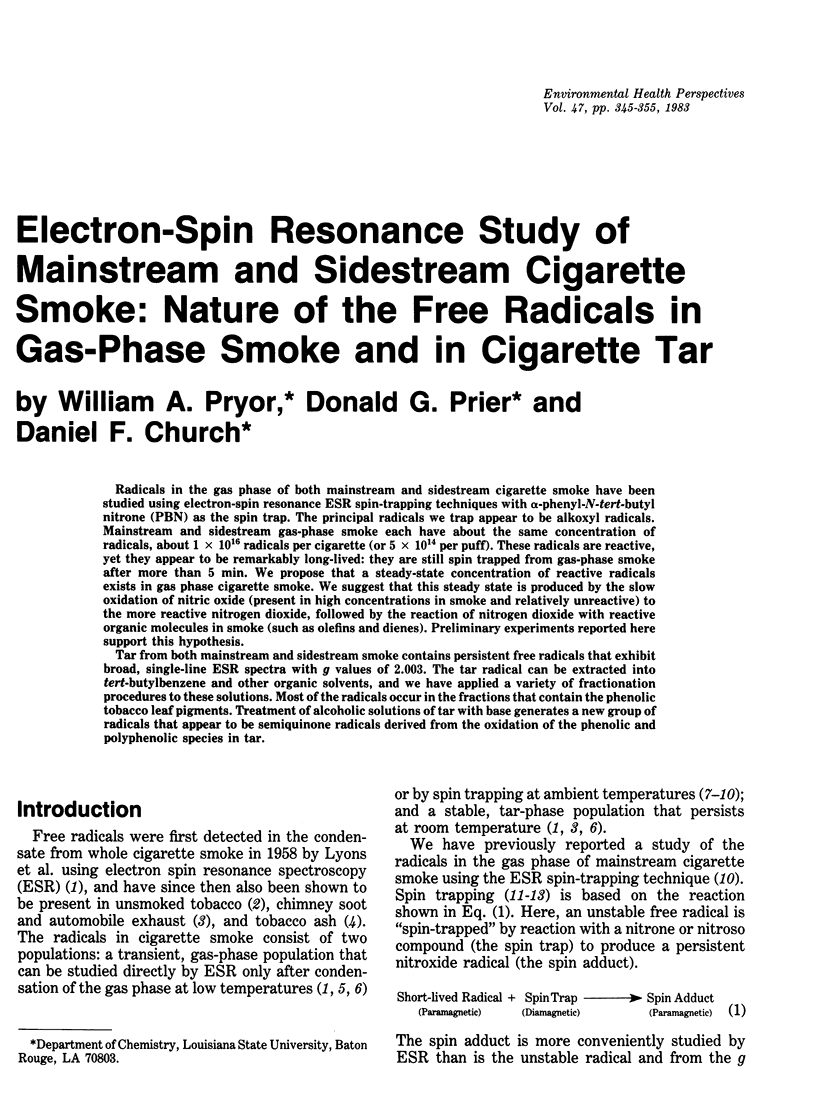
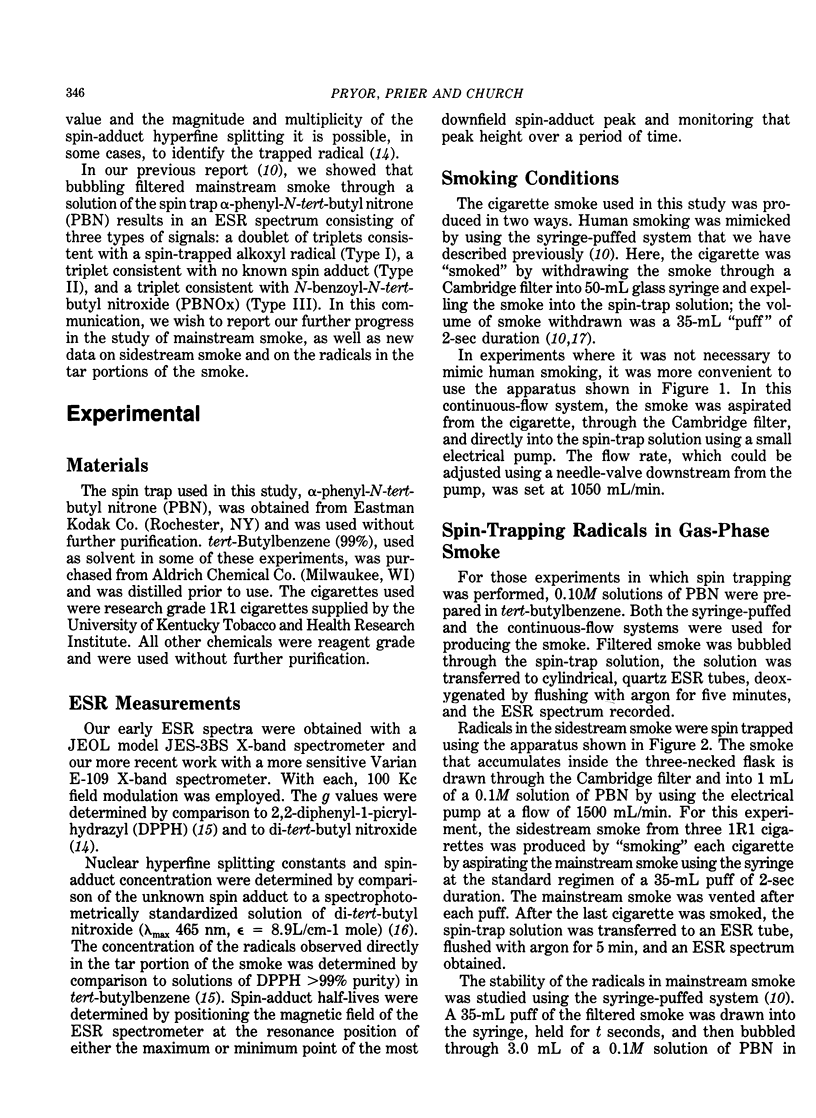

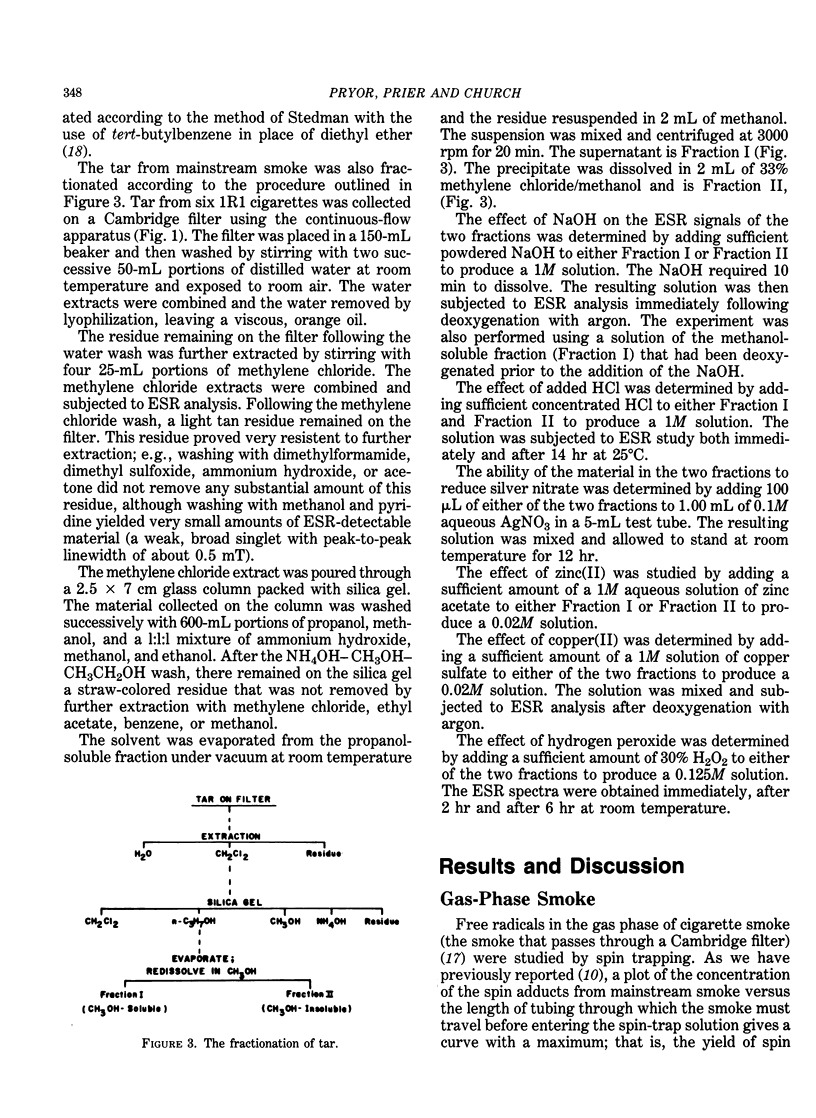
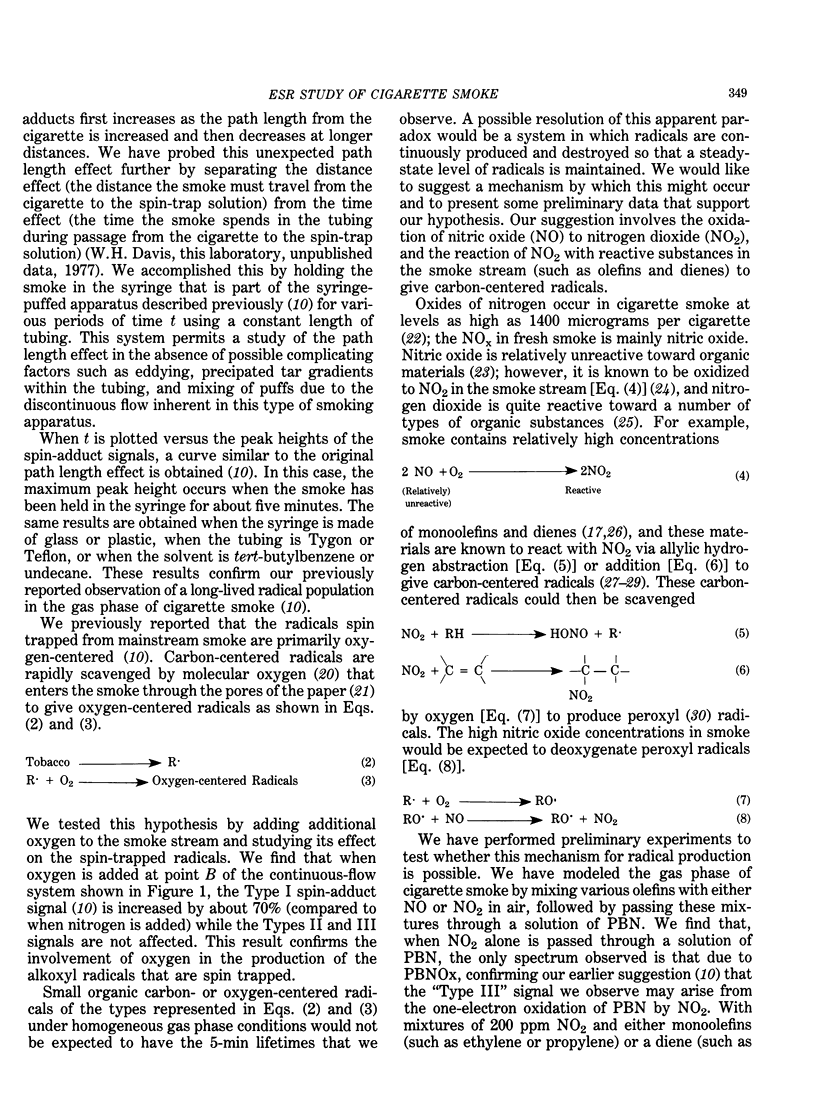
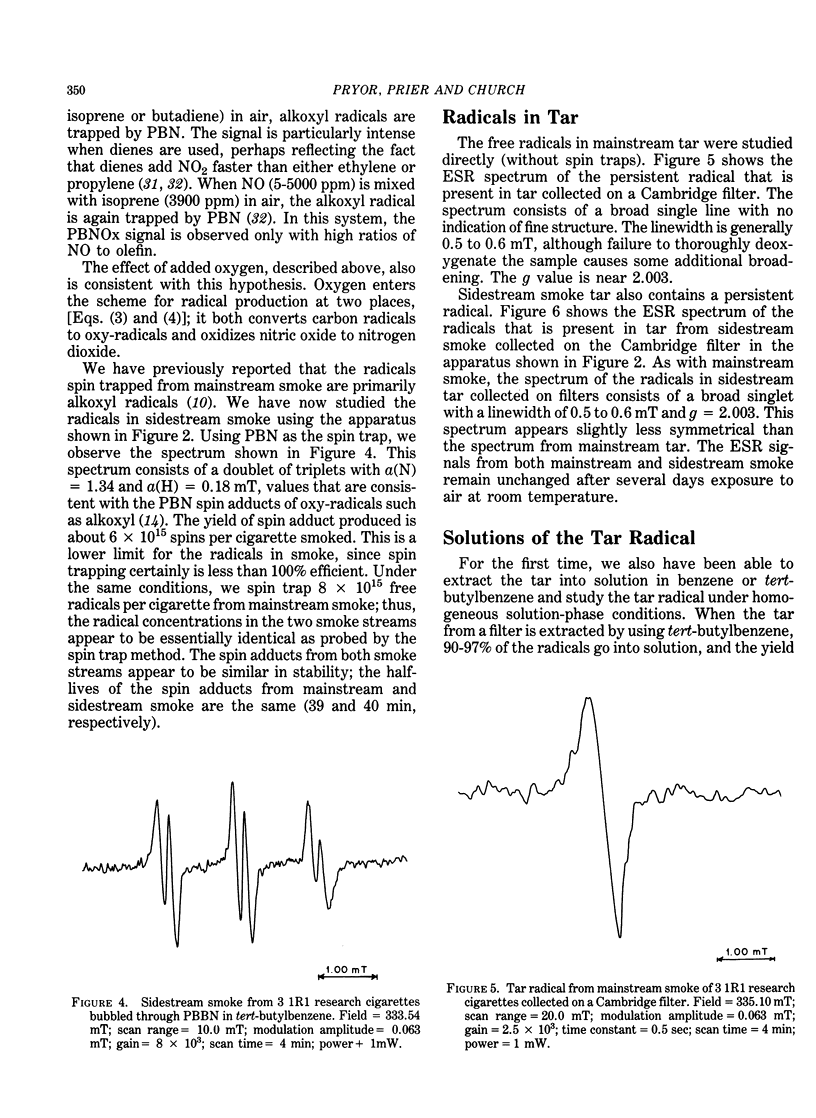
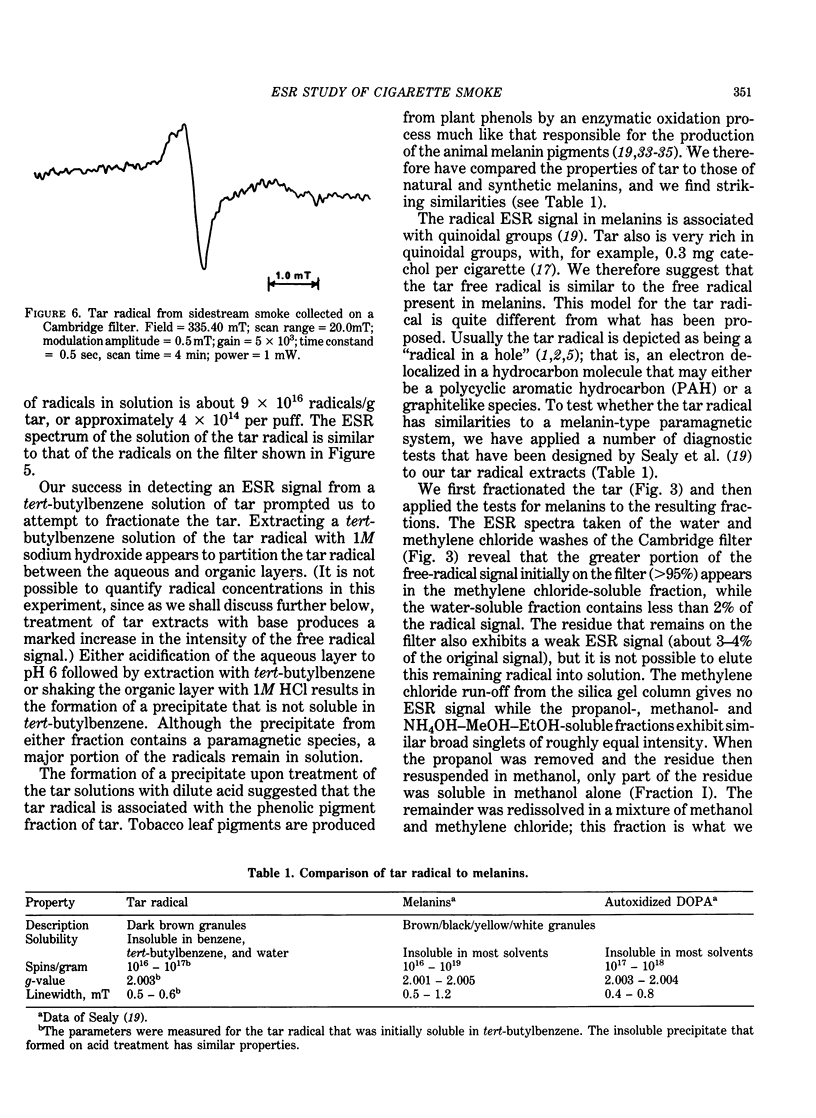
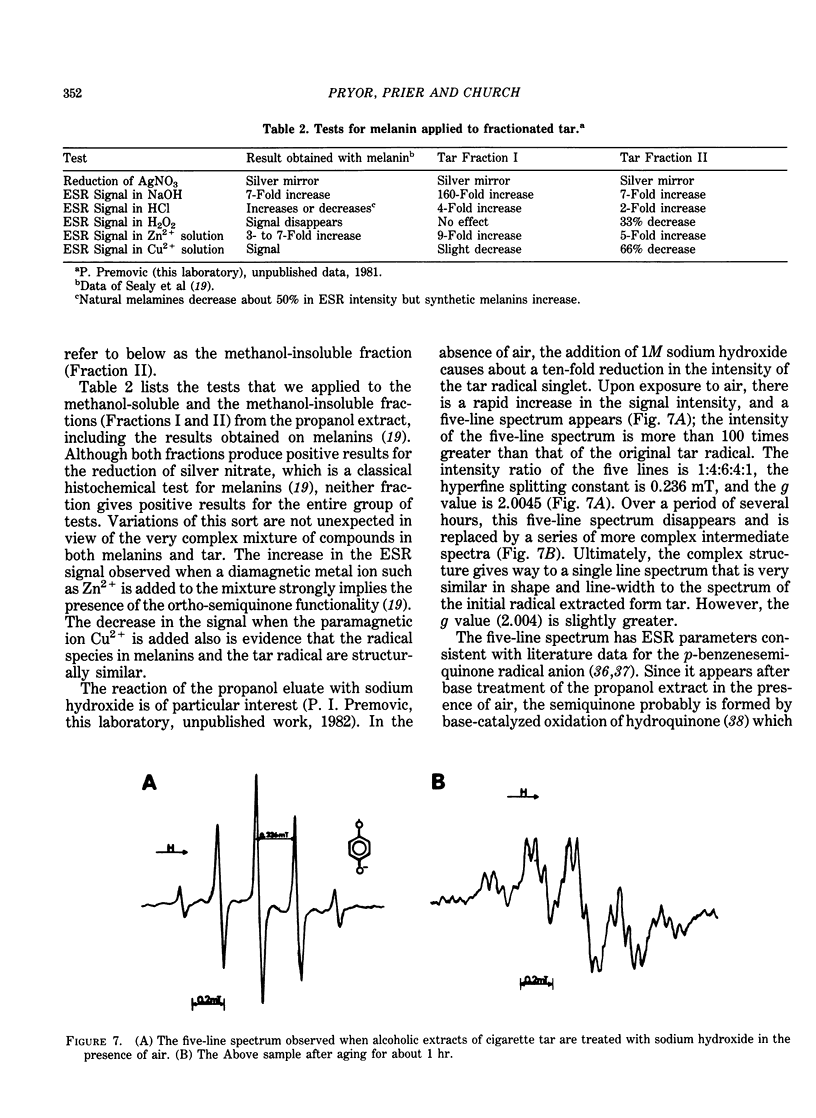
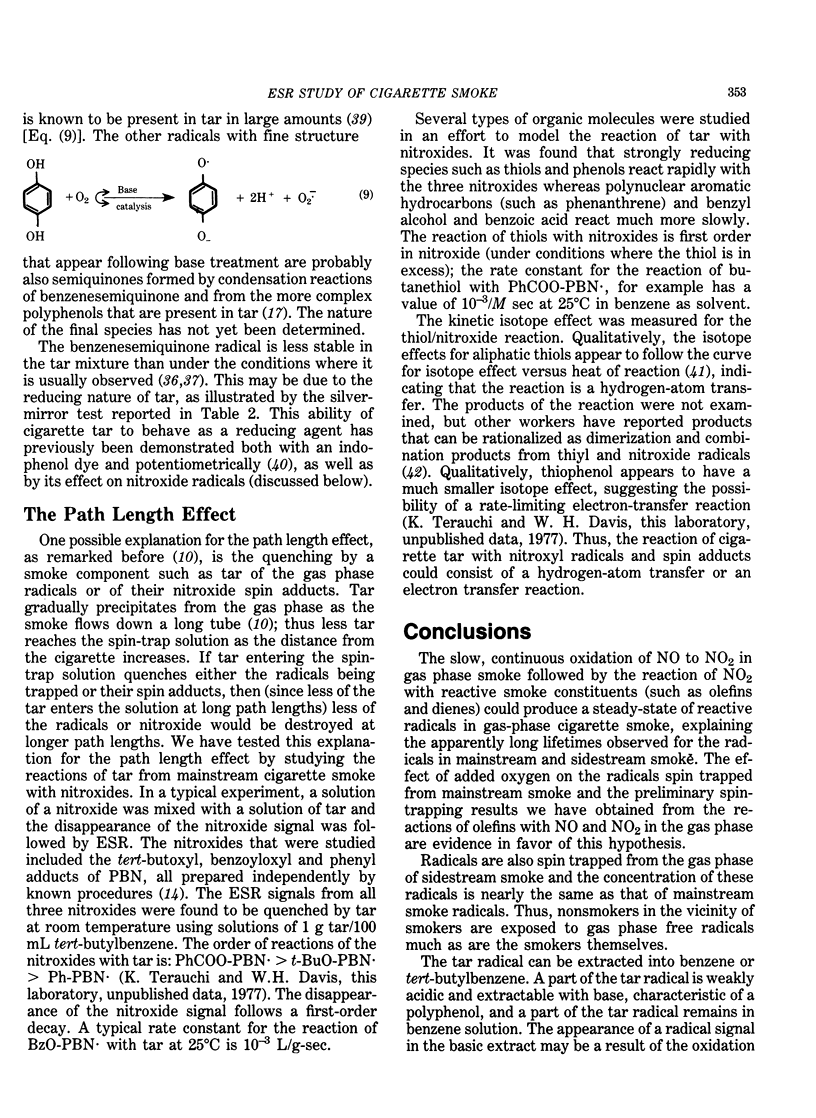
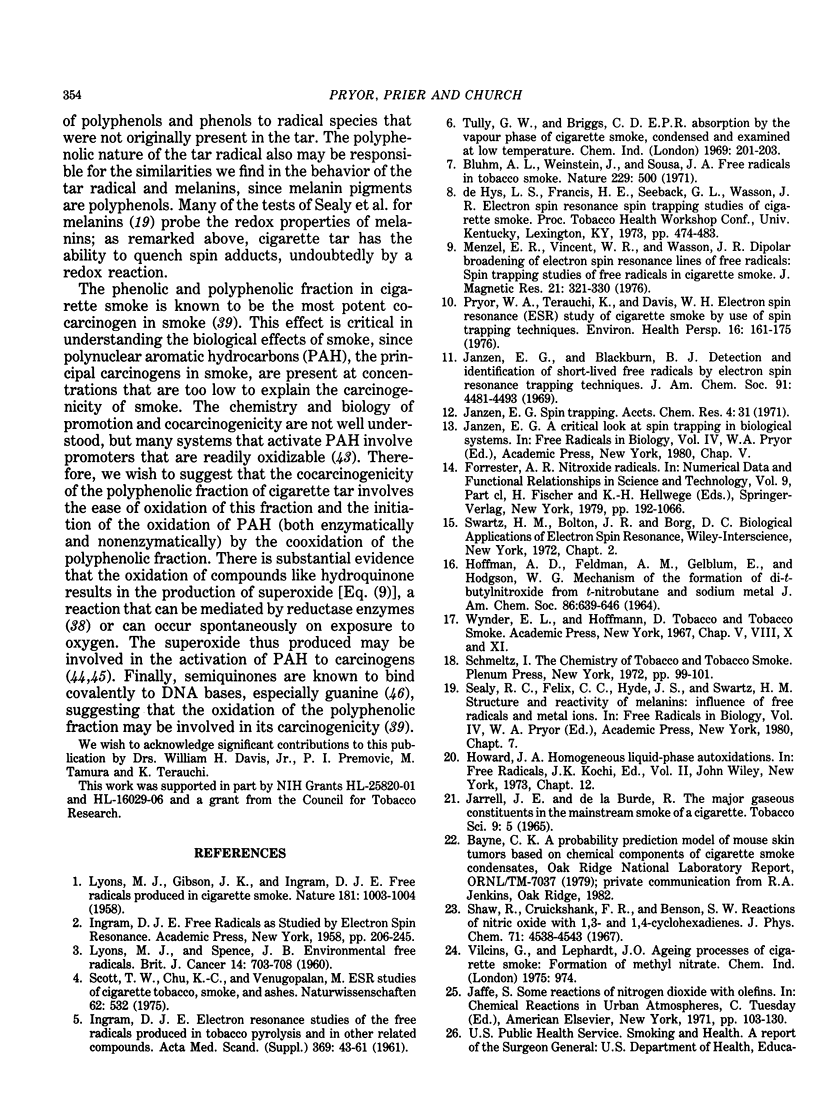
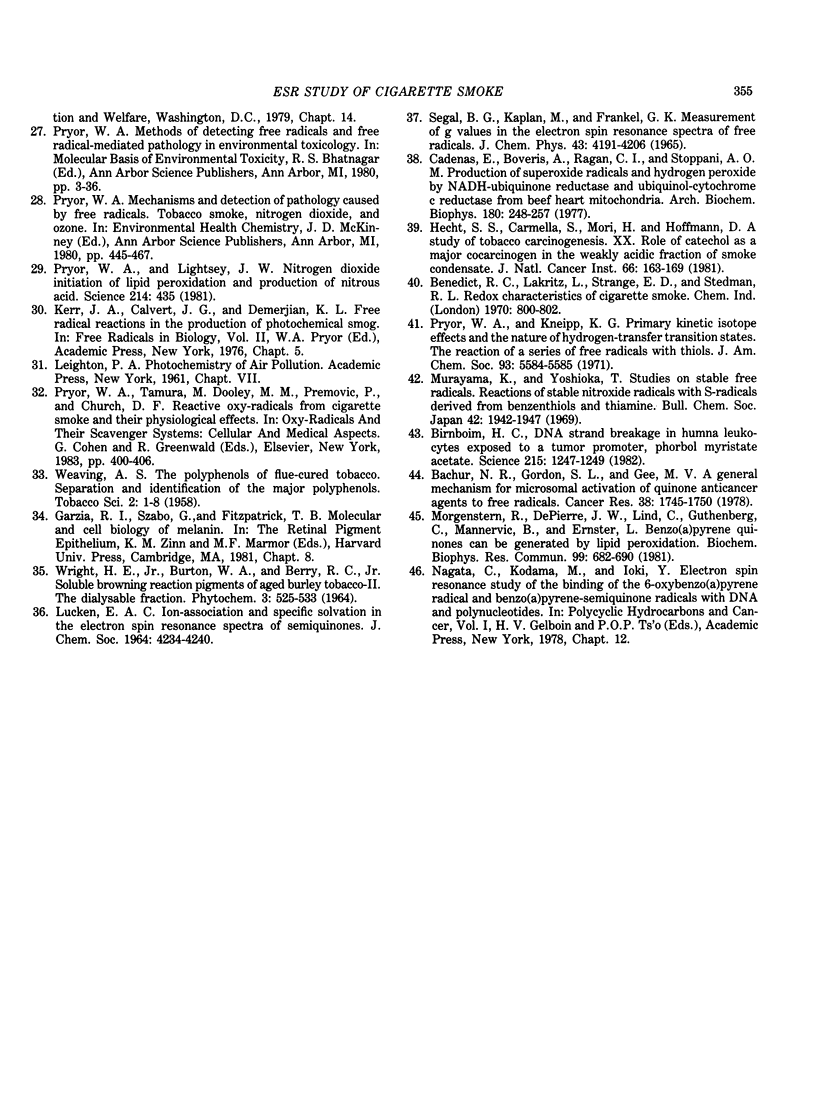
Selected References
These references are in PubMed. This may not be the complete list of references from this article.
- Bachur N. R., Gordon S. L., Gee M. V. A general mechanism for microsomal activation of quinone anticancer agents to free radicals. Cancer Res. 1978 Jun;38(6):1745–1750. [PubMed] [Google Scholar]
- Birnboim H. C. DNA strand breakage in human leukocytes exposed to a tumor promoter, phorbol myristate acetate. Science. 1982 Mar 5;215(4537):1247–1249. doi: 10.1126/science.6276978. [DOI] [PubMed] [Google Scholar]
- Bluhm A. L., Weinstein J., Sousa J. A. Free radicals in tobacco smoke. Nature. 1971 Feb 12;229(5285):500–500. doi: 10.1038/229500a0. [DOI] [PubMed] [Google Scholar]
- Cadenas E., Boveris A., Ragan C. I., Stoppani A. O. Production of superoxide radicals and hydrogen peroxide by NADH-ubiquinone reductase and ubiquinol-cytochrome c reductase from beef-heart mitochondria. Arch Biochem Biophys. 1977 Apr 30;180(2):248–257. doi: 10.1016/0003-9861(77)90035-2. [DOI] [PubMed] [Google Scholar]
- Hecht S. S., Carmella S., Mori H., Hoffmann D. A study of tobacco carcinogenesis. XX. Role of catechol as a major cocarcinogen in the weakly acidic fraction of smoke condensate. J Natl Cancer Inst. 1981 Jan;66(1):163–169. [PubMed] [Google Scholar]
- LYONS M. J., GIBSON J. F., INGRAM D. J. Free-radicals produced in cigarette smoke. Nature. 1958 Apr 5;181(4614):1003–1004. doi: 10.1038/1811003a0. [DOI] [PubMed] [Google Scholar]
- LYONS M. J., SPENCE J. B. Environmental free radicals. Br J Cancer. 1960 Dec;14:703–708. doi: 10.1038/bjc.1960.79. [DOI] [PMC free article] [PubMed] [Google Scholar]
- Morgenstern R., DePierre J. W., Lind C., Guthenberg C., Mannervik B., Ernster L. Benzo(alpha)pyrene quinones can be generated by lipid peroxidation and are conjugated with glutathione by glutathione S-transferase b from rat liver. Biochem Biophys Res Commun. 1981 Mar 31;99(2):682–690. doi: 10.1016/0006-291x(81)91798-8. [DOI] [PubMed] [Google Scholar]
- Pryor W. A., Lightsey J. W. Mechanisms of nitrogen dioxide reactions: initiation of lipid peroxidation and the production of nitrous Acid. Science. 1981 Oct 23;214(4519):435–437. doi: 10.1126/science.214.4519.435. [DOI] [PubMed] [Google Scholar]
- Pryor W. A., Terauchi K., Davis W. H., Jr Electron spin resonance (ESR) study of cigarette smoke by use of spin trapping techniques. Environ Health Perspect. 1976 Aug;16:161–176. doi: 10.1289/ehp.7616161. [DOI] [PMC free article] [PubMed] [Google Scholar]
- Scott T. W., Chu K. C., Venugopalan M. ESR studies of cigarette tobacco, smoke, and ashes. Naturwissenschaften. 1975 Nov;62(11):532–533. doi: 10.1007/BF00609071. [DOI] [PubMed] [Google Scholar]
- Tully G. W., Briggs C. D., Horsfield A. E.P.R. absorption by the vapour phase of cigarette smoke, condensed and examined at low temperatures. Chem Ind. 1969 Feb 15;7:201–203. [PubMed] [Google Scholar]


